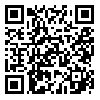BibTeX | RIS | EndNote | Medlars | ProCite | Reference Manager | RefWorks
Send citation to:
URL: http://jdisabilstud.org/article-1-2808-en.html
2- Associate Professor, Clinical Psychology, Faculty of Educational Science and Psychology, Shiraz University, Shiraz, Iran
3- Professor, Clinical Psychology, Faculty of Educational Science and Psychology, Shiraz University, Shiraz, Iran
Abstract
Background & Objective: It was argued that the major systems of the human brain influence behavior and cause personality differences among individuals. The behavioral inhibition system (BIS) and behavioral activation system (BAS) are related to avoidance and approach behaviors. In the previous decade, it was assumed that individual differences in these systems could lead to a broad spectrum of psychological disorders. For instance, it was asserted that reducing the experience, such as anxiety and failure to provide a proper response to threatening conditions, will result in low behavioral inhibition and a normal behavioral activation system. In contrast, high behavioral activation and normal behavioral inhibition system results in intensive impulsivity and anxiety. Such findings suggest that the study of high and low behavioral activation/inhibition may assist us in gaining a better grasp of the processes that underpin emotional responses. This study compared emotion regulation strategies in students with high and low behavioral inhibition/activation systems.
Methods: The present study was a causal–comparative study. The statistical population consisted of 20–35 years old students of Tehran University, Tehran City, Iran, who were studying in the academic year 2020–2021. In the first stage, 320 students from 5 faculties were selected by cluster random sampling, and two questionnaires on behavioral inhibition/activation systems (Carver and White, 1994) and Emotion Regulation Strategies (Garnefski, Kraaij & Spinhoven, 2001) were distributed among them. The Cognitive Emotion Regulation Questionnaire is composed of 9 conceptually distinct subscales. The BIS/BAS scale includes 24 items and 4 scales, in which 7 items were concerned with BIS and 13 with BAS. Four items of this scale were neutral. The incomplete questionnaires and the questionnaires of students with a history of referring to a psychiatrist or taking psychiatric medicines were excluded.
Ultimately, according to the inclusion criteria, 260 students were selected. Also, 32.3% (n=85) of the primary sample (n=260) were male, and 67.3% (n=175) were females. Students' raw scores were converted to Z scores. Based on the Z scores, 4 groups were selected by targeted sampling in the behavioral inhibition/activation systems questionnaire (n=72, each group was 18 people). Individuals with a standard Z score on the Behavioral Activation Scale above 1.5 and whose standard Z score on the Behavioral Inhibition Scale was less than 0.5 were chosen as the high behavioral activation group. Individuals were selected as the high behavioral inhibition group whose standard Z score on the behavioral inhibition scale was above 1.5, and their standard Z score on the behavioral activation scale was less than 0.5. Individuals were selected as the low behavioral activation group whose standard Z score on the behavioral activation scale was below –1.5 and their standard Z score on the behavioral inhibition scale was more than –0.5. Individuals were selected as the low behavioral inhibition group whose standard Z score on the behavioral inhibition scale was below –1.5 and their standard Z score on the behavioral activation scale was more than –0.5. Multivariate analysis of variance compared 4 groups in 9 emotion regulation strategies at a significance level 0.05 using SPSS software version 24.
Results: The multivariate analysis of variance and Tukey post hoc tests were employed to clarify differences between groups. Results showed significant differences between the groups in 5 strategies: acceptance (F3,65=2.78, p=0.048, ηр²=0.11), rumination (F3,65=3.98, p=0.011, ηр²=0.15), reappraisal (F3, 65=4.07, p=0.010, ηр²=0.15), catastrophizing (F3,65=7.67, p=0.000, ηр²=0.26), and blaming others (F3,65=5.70, p=0.002, ηр²=0.20). To understand which group shows significant differences, the Tukey post hoc test was done for 5 emotion regulation strategies: acceptance (HBIS>HBAS, p=0.037), rumination (HBIS>LBIS, p=0.007), reappraisal (LBIS>HBIS, p=0.012), catastrophizing (HBAS>LBIS, p=0.006), (HBIS>LBIS, p<0.001), and blaming others (HBAS>LBIS, p=0.014), (HBIS>LBIS, p=0.001). According to the results, the high behavioral inhibition group used the rumination strategy significantly more often than the low behavioral inhibition group. Regarding the acceptance strategy, the high behavioral inhibition group used this strategy significantly more often than the high behavioral activation system. We argued that findings about acceptance are contradictory. Acceptance might be adaptive in certain situations and might depend on the type of the studied mood. Also, the low behavioral inhibition group used the reappraisal strategy more often than the high behavioral inhibition group. Besides, the three groups had a significant difference in catastrophizing and blaming others strategies. Results indicated that high behavioral activation and high behavioral inhibition groups used the catastrophizing and blaming others strategy significantly more often than the low behavioral inhibition group.
Conclusion: The study findings suggest that high and low behavioral inhibition/activation systems play an important role in selecting emotion regulation strategies. The type of emotion regulation strategies is appropriate to the personality traits that dominate the individual and can be considered a factor in emotional dysregulation.
| Rights and permissions | |
 |
This work is licensed under a Creative Commons Attribution-NonCommercial 4.0 International License. |




